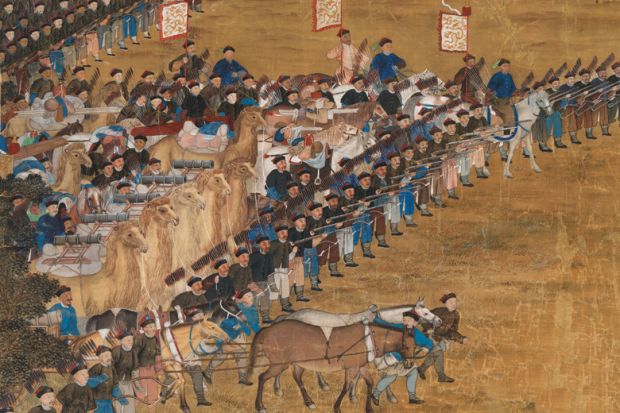This book will make certain China specialists think again. Tonio Andrade wipes out the conviction held by many, but not all, in the field of Chinese history that it was Confucianism that kept China from adopting military technology.
Drawing on diverse sources in several languages, Andrade, professor of history at Emory University, shows that from at least the 10th century, Confucian officials were enthusiastic about military innovation and means – until the early 19th century, when, some historians contend, it was Confucianism that kept China unprepared for warfare. They are unaware that Confucian China had once been in the lead in military innovation and tactics, which puts paid to the argument that while the Chinese invented gunpowder, they didn’t use it in warfare.
As he shows in his acknowledgements and copious citations, Andrade is not the first scholar to make such claims, but he leads us deeper in these directions than any scholar to date. The case he makes here will encourage new publications along those lines and will certainly make teaching more interesting.
This sentence alone should change some outlooks: “When Chinese literati first encountered the ‘classic gun’ of Europe in the early 1500s, they immediately began to adopt and adapt it, making new sizes and styles, but keeping the term ‘Frankish guns.’” Thus, Andrade writes, “the early modern period, from the 1500s through the Early 1700s was an Age of Parity between East Asians [Koreans and Japanese were also involved] and Europeans”. (Incidentally, I was taught this at Columbia University in 1955.)
In the early 14th century, Ming “policies prescribed that 10 percent of infantry soldiers should be armed with guns, by the last third of the 1400s, the figure rose to 30 percent, a rate not seen in Europe until the mid-1500s”. Andrade discusses the volley technique: ranks of soldiers fire, retire to a second or third line to reload, and a new first rank fires, thus ensuring uninterrupted firing. It is a technique familiar to anyone who has seen certain war films made in the West: British officers commanding desert battles against crazed enemies on horses and camels shout “Fire, withdraw; second rank, fire!” and so on. But, as Andrade shows, China’s crossbowmen had been using volley fire for centuries. This book includes a picture of Chinese soldiers employing their long-acquired muskets in early 17th-century volleys. On the seas, equivalent developments enabled Chinese naval captains to defeat their Dutch and Russian rivals.
What happened then, in the early 19th century, when the British crushed Chinese forces on sea and land in the First and Second Opium Wars – defeats that led to the conviction in some quarters in the West and in China that Confucian China never embraced warfare? Andrade underlines an irony here. The late 18th and 19th centuries were, broadly speaking, periods of peace in China. In Europe, developments in science and mathematics – and, above all, constant warfare – during that period meant that at last the West overtook the Chinese. However, he also shows that 19th-century Confucian officials, keen to save the empire, founded several arsenals that recognised, adopted and taught the most up-to-date military innovations from the West. As Andrade explains, these would fail in the face of Western power largely because of confusion stemming from the Chinese court – even though Manchu emperors, themselves Confucians, understood the importance of warfare. Unstable Chinese defences ultimately proved no match for the discipline of the British and Japanese.
Jonathan Mirsky was formerly associate professor of Chinese, history and comparative literature at Dartmouth College in the US, and former Far East editor of The Times.
The Gunpowder Age: China, Military Innovation, and the Rise of the West in World History
By Tonio Andrade
Princeton University Press, 448pp, £27.95
ISBN 9780691135977 and 9781400874446 (e-book)
Published 24 February 2016
Register to continue
Why register?
- Registration is free and only takes a moment
- Once registered, you can read 3 articles a month
- Sign up for our newsletter
Subscribe
Or subscribe for unlimited access to:
- Unlimited access to news, views, insights & reviews
- Digital editions
- Digital access to THE’s university and college rankings analysis
Already registered or a current subscriber?




